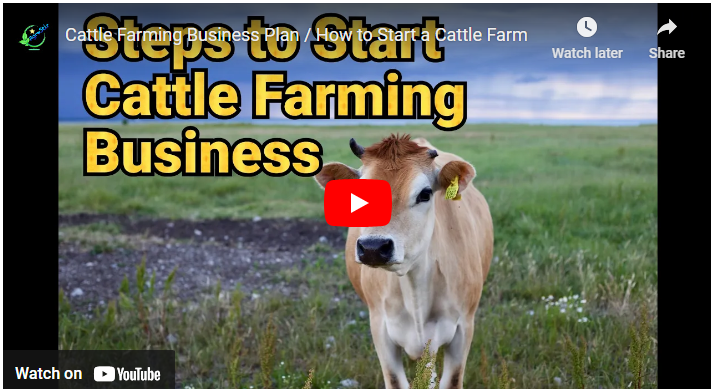Starting a cattle farming business in Australia can be a rewarding venture for those interested in agriculture and livestock. Cattle farming provides opportunities for income generation, self-employment, and growth in the agricultural sector.
Why Start a Cattle Farming Business? Starting a cattle farming business offers numerous advantages. It allows you to enter the profitable agricultural industry, diversify your income streams, contribute to food production, and establish a sustainable business model for the long term.
To start a cattle farming business in Australia, begin by acquiring suitable land for grazing and establishing appropriate infrastructure such as fencing and water sources. Choose the right breed of cattle, develop a feeding and health management plan, and comply with local regulations to ensure a successful and sustainable operation.
This step-by-step guide will help you understand the process and essential aspects involved in starting a successful cattle farming business in Australia.
How to Start a Cattle Farming Business in Australia Step by Step Guide
Research and Planning
Before embarking on your cattle farming journey, conduct thorough research and create a comprehensive business plan. Understand the market demand, identify potential customers, analyze competitors, and determine the profitability of cattle farming in your chosen region.
Choosing the Right Location
Selecting the right location is crucial for the success of your cattle farming business. Consider factors such as climate, availability of grazing land, proximity to markets and suppliers, and access to water sources. Consult with local agricultural experts and extension services to make an informed decision.
Acquiring Cattle
To start your cattle farming business, you’ll need to acquire cattle. Research different breeds suitable for your farming goals and climate. Purchase healthy and quality cattle from reputable breeders or auctions. Ensure you comply with all legal requirements and obtain necessary identification and documentation for the purchased animals.
Infrastructure and Facilities
Invest in appropriate infrastructure and facilities for your cattle farm. This includes constructing sturdy fences, building shelters for protection against weather elements, designing proper feeding and watering systems, and arranging secure handling facilities. Adequate infrastructure ensures the well-being and safety of your cattle.
Feeding and Nutrition
Develop a feeding and nutrition plan to provide balanced diets for your cattle. Consult with livestock nutritionists or veterinarians to create a feeding regimen that meets the specific needs of each age group and breed. Consider factors such as pasture management, supplementary feeding, and proper storage of feed.
Health and Veterinary Care
Maintaining the health and well-being of your cattle is crucial for a successful farming operation. Establish a relationship with a qualified veterinarian who can provide regular check-ups, vaccinations, and necessary treatments. Implement preventive measures to minimize the risk of diseases and infections within your herd.
Marketing and Sales
Create a marketing strategy to promote your cattle and sell your products. Explore different channels such as local markets, direct sales to consumers, online platforms, and collaboration with local meat processors or distributors. Build relationships with potential buyers and communicate the quality and benefits of your cattle products.
Financial Management
Efficient financial management is essential for the profitability of your cattle farming business. Keep detailed records of expenses, income, and investments. Monitor market trends and adjust your pricing strategies accordingly. Seek professional advice on tax obligations, insurance options, and potential grants or funding programs.
Legal Considerations
Comply with all legal requirements and regulations related to cattle farming in Australia. Obtain necessary licenses, permits, and registrations. Familiarize yourself with animal welfare standards, biosecurity protocols, and environmental regulations. Stay updated on any changes or new legislation that may affect your operations.
Challenges and Risks
Be prepared to face challenges and risks associated with cattle farming. These may include extreme weather conditions, disease outbreaks, market fluctuations, and financial uncertainties. Develop contingency plans and implement risk management strategies to mitigate potential losses.
Future Trends and Opportunities
Stay informed about emerging trends and opportunities in the cattle farming industry. Embrace technological advancements, explore sustainable farming practices, and diversify your products or services. Stay connected with industry associations, attend conferences, and network with fellow farmers to stay ahead of the curve.
What are the initial costs involved in starting a cattle farming business in Australia?
Starting costs can vary depending on factors such as land prices, cattle prices, infrastructure requirements, and legal obligations. It is recommended to create a detailed business plan to estimate the initial investment required.
How much land do I need for cattle farming in Australia?
The amount of land needed depends on factors such as the number of cattle, grazing capacity, and climate conditions. Generally, one hectare of good-quality pasture can support one to two cattle units.
What are some common cattle breeds suitable for Australian conditions?
Popular cattle breeds in Australia include Angus, Hereford, Brahman, and Santa Gertrudis, among others. Consider factors such as climate tolerance, market demand, and breeding objectives when selecting a breed.
Are there any government programs or grants available for cattle farmers in Australia?
Yes, there are various government programs, grants, and funding options available to support cattle farmers in Australia. Stay updated with relevant agricultural agencies and organizations to explore potential financial assistance opportunities.
How long does it take to see profits in a cattle farming business?
The timeline to profitability can vary depending on factors such as the size of the herd, market conditions, and the efficiency of operations. Generally, it may take a few years to start seeing significant profits in a cattle farming business.
Conclusion
Starting a cattle farming business in Australia requires careful planning, research, and dedication. By following the step-by-step guide outlined in this article, you’ll be well-equipped to embark on your cattle farming journey successfully. Remember to adapt to changing market conditions, prioritize animal welfare, and continuously improve your knowledge and skills to thrive in this dynamic industry.





One Reply to “How to Start a Cattle Farming Business in Australia”